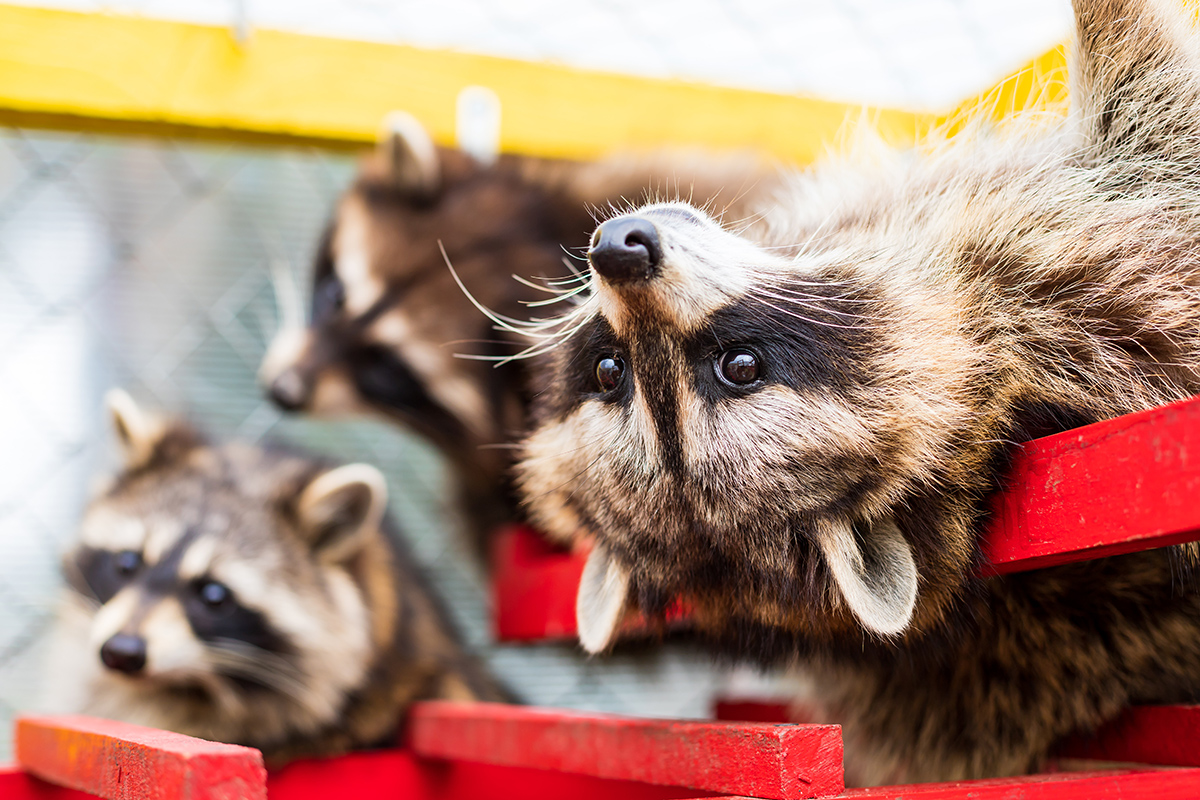
Raccoon Removal
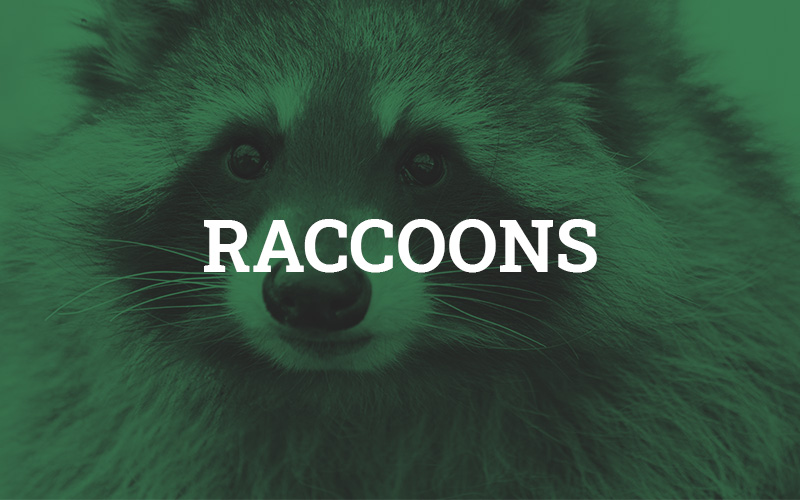
The raccoon can live in a wide range of habitats, requiring only a source of water, food, and a protected area for denning in order to survive. They can be found in northern Alberta, southern British Columbia and Saskatchewan, central Saskatchewan, Manitoba and Ontario, southern Quebec, and the Maritimes.
Naturally, raccoons den in existing shelters like hollow trees, ground burrows, and muskrat houses, but with habitat loss, spaces like attics, crawlspaces, and chimneys are becoming more prevalent. These clever creatures are excellent climbers and intelligent problem solvers, making raccoon removal a daunting task for a property owners.
Raccoon Control
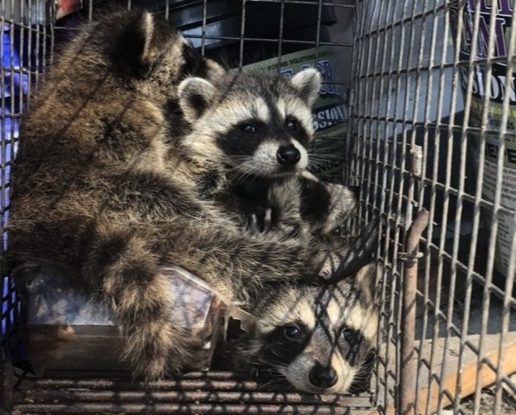
Raccoons are present throughout Canada. Adaptable and resourceful critters, raccoons thrive in urban and suburban settings. Raccoons most commonly enter homes looking for a denning place to raise their young. When you need to get rid of raccoons, humane trapping is the best way to ensure they don’t return.
Inspection
Signs of raccoon damage vary, but our inspections look for signs of digging, gnawing, and the hand-shaped marks left behind by these animals. Wildlife removal without a thorough inspection could result in some animals being left in the home.
Raccoon Trapping and Removal
Live trapping is one of the most effective ways to get rid of raccoons. We strategically place the trap and use bait most likely to lure the raccoon. If juveniles are present, we can hand remove them and reunite with the mother. In certain cases, it is possible to evict raccoons with repellents.
Exclusion and Repair
Once raccoons are removed, it is essential that their entryways are sealed, followed by the repair of insulation and wires. We apply sanitization agents and an ectoparasite treatment.
Signs of Raccoons in the House
In residential neighborhoods, raccoons create dens in chimneys, attics, and basements of manmade buildings, as well as under porches and sheds in yards. The pests enter homes and sheds through cracks in building foundations and invade lawns. Additionally, raccoons may enlarge existing holes or rip siding off exterior walls to make their way indoors. Once infestations of raccoons in houses have been established, the pests are easy to detect. Sounds, noises, scat, and tracks are some of the most obvious clues you can find that a raccoon is in your home.
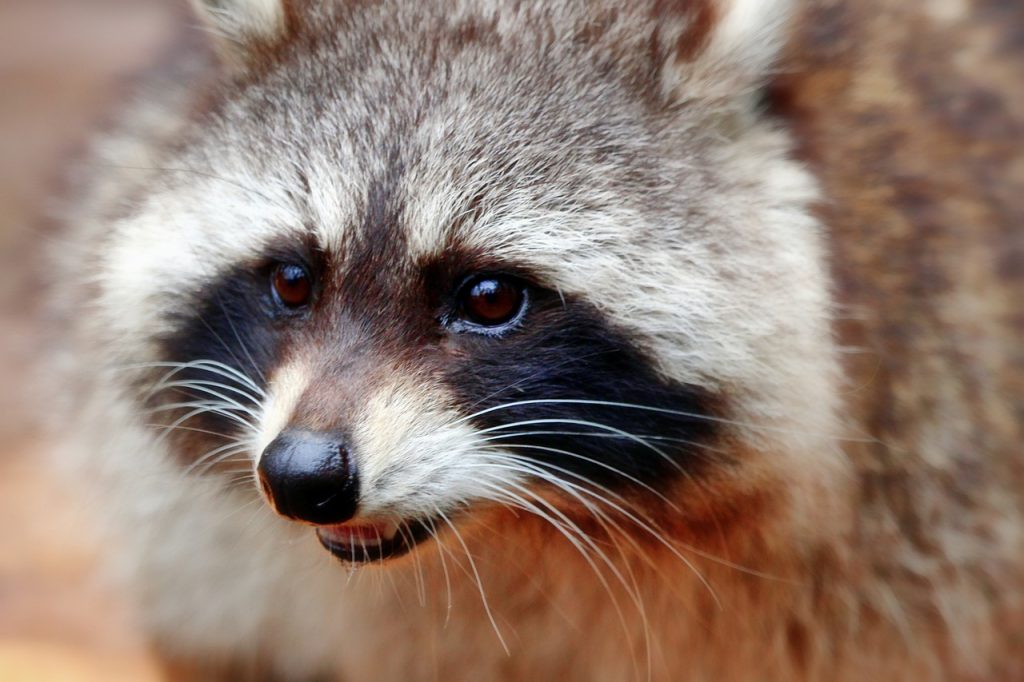
Raccoon Sounds & Noises
Nocturnal critters, raccoons are not subtle. They can grow to about 80 centimeters and weigh between 6-8 kilograms so you will hear them as they move into your house.
Vocal Noises
Raccoon sounds range from the vocalizations the animals use to communicate with each other, to the noises they make as a result of their rustling, scurrying, and other activities. Known to be extremely vocal creatures, raccoons interact by using more than 200 different sounds, which include purring, chittering, growling, snarling, hissing, whimpering, and even screeching like owls. Juvenile raccoon sounds include mewing, crying, and whining.
Movement Noise
Even when raccoons are quite vocally, they still make noise. The sound of an animal rustling or scurrying about the attic or in the chimney is a common sign that a raccoon has moved in. Typical raccoon sounds also occur when the pests walk across rooftops, construct their dens, or attempt to gain entry through holes or other small openings that lead to attractive denning sites. People tend to hear raccoon sounds most frequently at night due to the nocturnal behavior of the pests.
Latrine sites
Raccoons are infamous throughout the United States as nocturnal troublemakers that invade garbage cans looking for easy meals. When they den in residential areas, raccoons create separate latrine sites, and encountering one of these indicates a nearby infestation. They consistently return to these locations, which are commonly found on roofs, in attics, woodpiles, haylofts, and on or under decks.
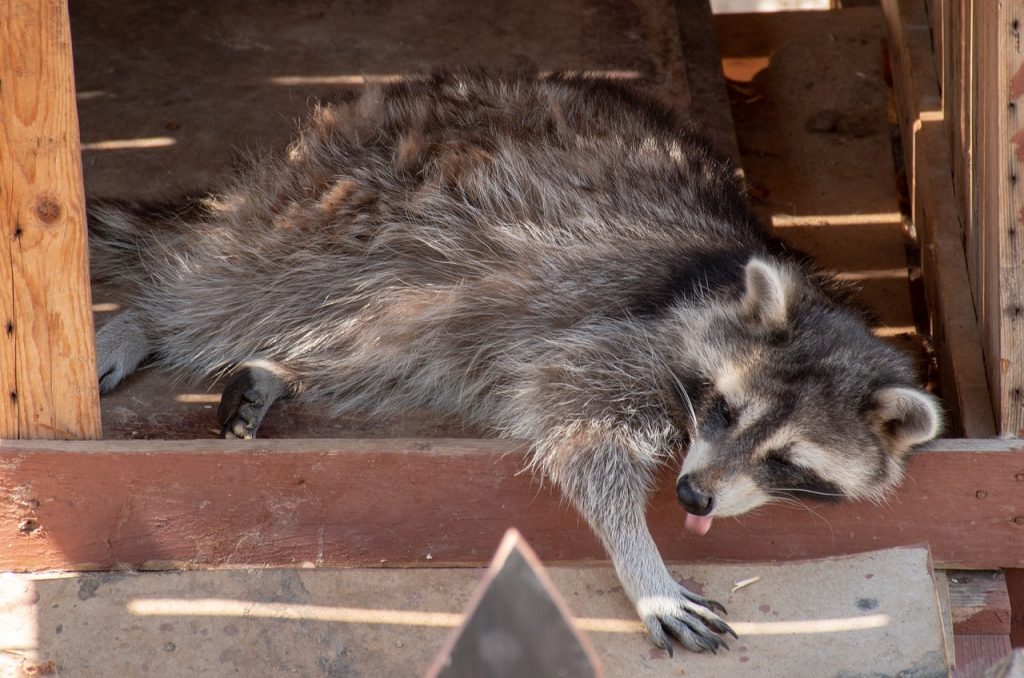
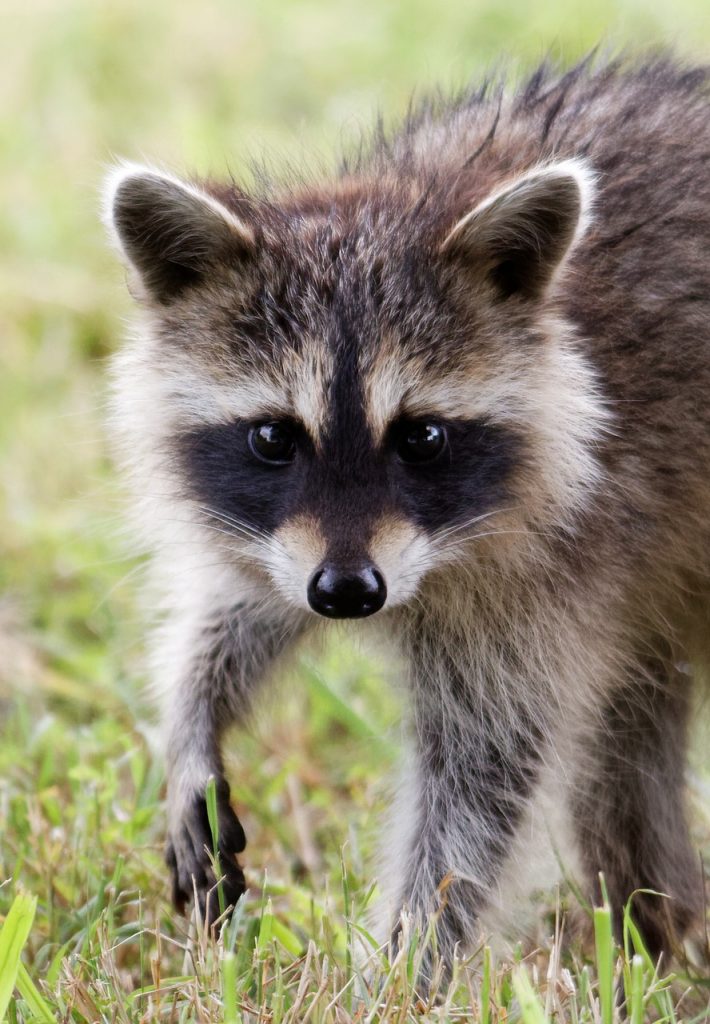
Raccoon Tracks
One of the best ways to identify the presence of raccoons is to identify their tracks. Raccoons have nimble hands and feet that each contain five fingers and toes. At first glance, raccoon tracks may look like the handprints of human children.
Dangers of Raccoons
In residential neighborhoods, raccoons create dens in chimneys, attics, and basements of manmade buildings, as well as under porches and sheds in yards. The pests enter homes and sheds through cracks in building foundations and invade lawns.
Raccoon Damage
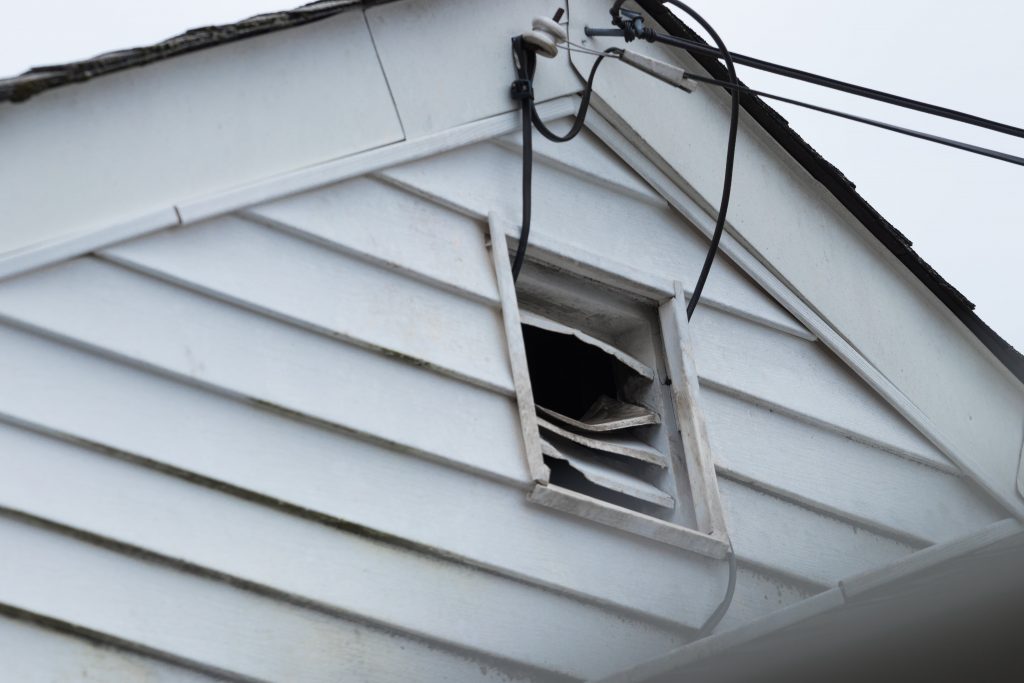
Raccoon damage to yards, roofs, and houses costs homeowners thousands of dollars in repairs every year. These pests are smart and constantly on the hunt for both food and shelter. Their agile paws allow them to tear into materials that would deter other animals, resulting in harm to property.
Grubs and earthworms are easy food sources, especially for young raccoons. From mid to late summer, homeowners may find holes and piles of sod scattered across the yard due to the pests’ nightly foraging. In addition to raccoon damage to lawns, the animals rip open trash bags and sift through the contents to find a meal.
The most expensive problems occur when raccoons take shelter in houses. The pests are strong enough to pull shingles and boards from roofs to climb into attics. Also, raccoons damage roofs during their attempts to break through metal vents and climb into chimneys. Raccoons typically designate latrine sites near their dens. When raccoons nest in houses, their accumulated waste quickly destroys insulation and saturates woodwork. Their feces spread raccoon roundworm, which is a serious health hazard for residents repairing raccoon damage to homes. In addition, fleas and ticks in raccoon fur can transfer to people or pets.
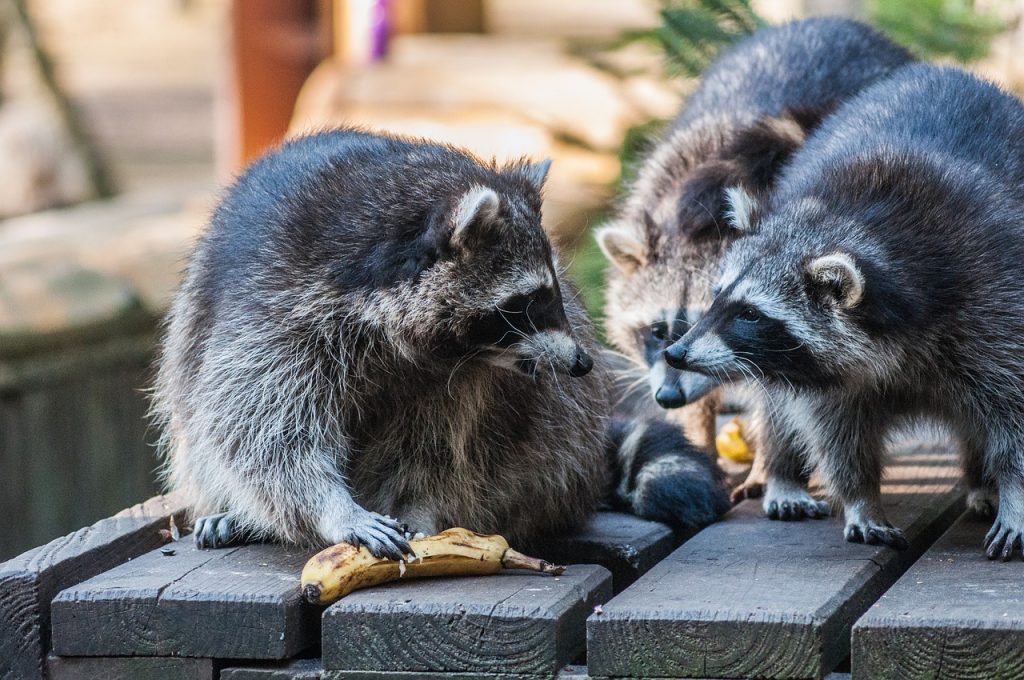
Raccoon Diseases
The pests are notorious carriers of rabies, distemper, and roundworm. As these illnesses are spread through contact with raccoons or exposure to their waste, residents of infested homes are at risk of contracting these diseases.
What Our Clients Say About Us
Frequently Asked Questions
How much does it cost to remove a raccoon?
Pricing will vary by location of the raccoon, condition of your property, and the number of raccoons present.
Who removes raccoons for free?
Most cities will not remove a raccoon from your home.
Do raccoon repellents work?
At best, raccoon repellents offer a temporary solution. Raccoons can grow accustomed to some repellents and deterrents. If you do not seal entry points, raccoons can reenter your home.
Do raccoons hibernate during the winter?
Raccoons do not hibernate, but they will take shelter during the bitterest winter days.
What’s the best way to get rid of raccoons?
Professional exclusion services provide the most effective long-term solution for raccoon control.
Are raccoons dangerous?
Raccoons are naturally shy animals that prefer to retreat when they sense humans nearby. As they spend more time around people, this fear can fade.
Even if a raccoon seems calm or friendly, residents should never approach a wild animal. Raccoons are dangerous to people and pets when cornered, ill, or protecting their young.